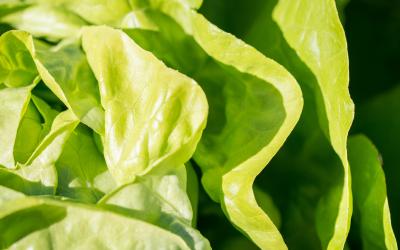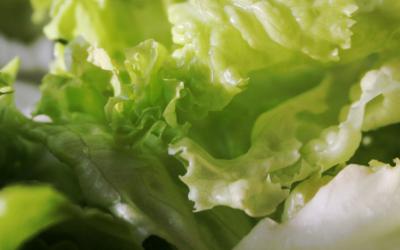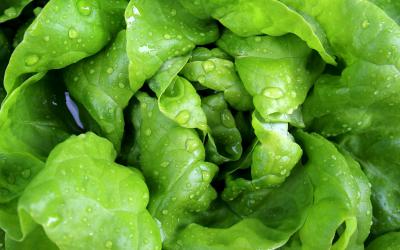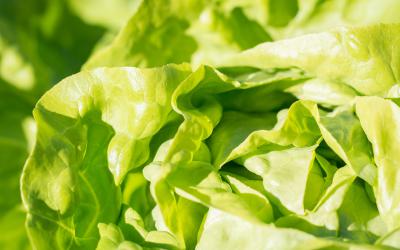Lettuce downy mildew caused by Bremia lactucae is an important disease that can significantly reduce the quality and marketability of lettuce. This disease is controlled using fungicides, by modifying the environment to reduce humidity, and by planting varieties containing downy mildew resistance (Dm) genes. B. lactucae evolves rapidly resulting in new races leading to the breakdown of resistance in downy mildew resistant (DMR) lettuce varieties, and fungicide resistance, threatening the available control methods.
Plant Disease
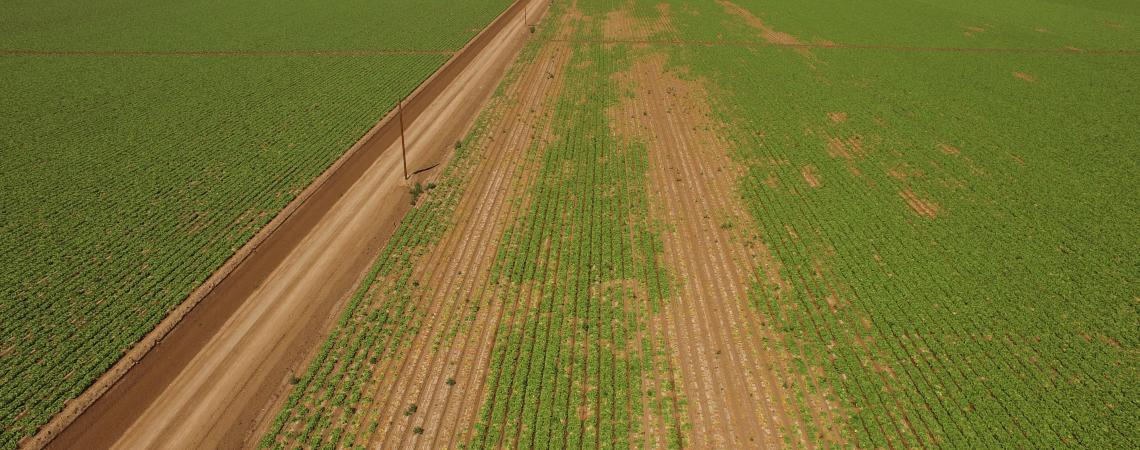
Lettuce Diseases
Lettuce is perhaps the most widely consumed vegetable in the United States yet its commercial production is extremely restricted. Although limited commercial acreage can be found in several states such as Colorado, Texas, and Florida, Arizona, and California dominate US production accounting for more than 95% of the US lettuce production.
Most production is focused on three principal lettuce types:
- Crisphead (iceberg)
- Romaine
- Leaf lettuce
In California, lettuce is ranked as the 5th most important agricultural commodity with a gross value of $1.96 billion (California Agricultural Production Statistics 2016). In Arizona, the importance of lettuce as an agricultural commodity is even more striking: The lettuce crop is ranked as the highest valued crop commodity with a gross value of $800 million or roughly 30% of the state's agricultural economy (Arizona Agricultural Statistics Service 2008).
Between these states, lettuce production occurs year-round and is primarily grown in three regions depending on the season. In summer, production occurs in the Salinas Valley and other coastal valleys in California, and in fall and spring production occurs in the San Joaquin Valley, CA. In winter, virtually all US production of the 3 lettuce types occurs in the deserts of Arizona and California, and is a critical industry for this region's economic health (California Agricultural Statistics Service. 2006; National Agricultural Statistics Service).
Disease management is a principal activity for growers of all types of lettuce as viral, bacterial, and most importantly, fungal diseases can seriously impact quality and yield. Many management strategies are based on chemical applications as these methods often provide the only level of control acceptable to the industry. The content located under the plant disease section of the Learn Tab was made possible by funding from the Arizona Iceberg Lettuce Research Council (AILRC).
Disease control and management were identified by industry as the highest-priority area of research focus in an AIRLC survey. The plant disease content was selected to provide a concise overview of some of the diseases of concern identified in the AILRC survey to assist growers with disease control and management and provide the most immediately applicable information needed for successful lettuce production in Arizona rather than an exhaustive listing of the entire body of knowledge.
For a complete list of these diseases, visit the American Phytopathological Society website.
Lettuce downy mildew caused by Bremia lactucae is an important disease that can significantly reduce the quality and marketability of lettuce. This disease is controlled using fungicides, by modifying the environment to reduce humidity, and by planting varieties containing downy mildew resistance (Dm) genes. B. lactucae evolves rapidly resulting in new races leading to the breakdown of resistance in downy mildew resistant (DMR) lettuce varieties, and fungicide resistance, threatening the available control methods.
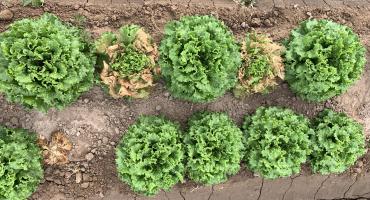
In March 2021 the tospovirus Impatiens necrotic spot virus (INSV) was identified in lettuce fields in the Yuma growing region. This is a new disease for iceberg lettuce growers in Arizona. How the virus was introduced into Yuma County has not been determined and the impact is difficult to predict. INSV is reported to infect hundreds of plant species including ornamentals, crops and weed species. Symptoms include necrotic spots, tip dieback, stunting, yellowing and death. The disease is vectored by thrips, primarily by western flower thrips.
Fusarium wilt of lettuce is severely impacting productivity of the Arizona lettuce industry. The disease, caused by a soil-residing fungus that once established may persist in soils indefinitely, has spread widely throughout Arizona's lettuce growing regions since it was first identified in Arizona in 2001. Romaine cultivars can tolerate the pathogen better than head lettuce, but even with this tolerance, romaine crop losses occur in fields with high disease pressure. Currently, there is no effective treatment to mitigate the disease in lettuce.
This project addresses the number one priority issue from the 2018 Arizona Iceberg Lettuce Research Council (AILRC) survey: Disease Control and Management. The Yuma Center of Excellence for Desert Agriculture (YCEDA) was established to be responsive to the critical needs of the production agriculture industry. Fusarium wilt of lettuce is one of the challenges prioritized by YCEDA stakeholders, and we are working on several fronts to investigate strategies to control this disease.
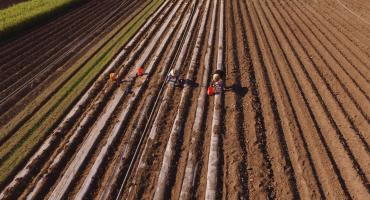
This project addresses the number one priority issue in the 2018 AILRC survey: Disease Control and Management. Fusarium wilt of lettuce caused by the soil-residing fungus Fusarium oxysporum f.sp. lactucae (fol) has increasingly become a problem in iceberg lettuce in Arizona, causing significant losses in early season iceberg lettuce crops.
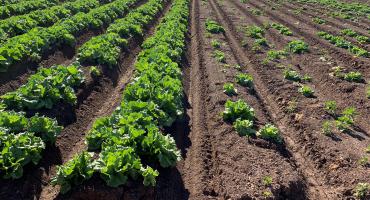
Since 2015, The Yuma Center of Excellence for Desert Agriculture (YCEDA) has managed Fusarium wilt of lettuce field trials evaluating commercial and pre-commercial lettuce cultivars for resistance to Fusarium wilt, chemical and biological crop protection products for disease suppressing activity, and cultural management methods.
Fusarium wilt of lettuce continues to be a growing threat to the competitiveness of the Arizona iceberg lettuce industry, and unlike most plant diseases, there is no known treatment to control this soil-borne disease completely. The Yuma Center of Excellence for Desert Agriculture (YCEDA) is leading multiple projects conducting research to find solutions to this plaguing problem. The objectives of this project were developed based upon findings from our 2016 study, “Advancing Fusarium wilt management in lettuce", which revealed the need for more precise and reproducible methods for inocu

Prior to submitting the proposal, Lettuce Fusarium Wilt Trials and Analysis, to the AZ Department of Agriculture's Specialty Crop Block Grant Program, YCEDA convened a meeting with members of the production Ag industry to receive guidance and ensure the research would address industry needs. $69,000 was awarded to continue efforts to mitigate Fusarium Wilt of lettuce.

The 2015 Conference on Excellence in Desert Agriculture focused on Fusarium wilt of lettuce. The Yuma Center of Excellence for Desert Agriculture (YCEDA) brought together the world's foremost researchers and industry professionals to share their knowledge on this insidious disease. The purpose of hosting this conference was twofold: (1) to share and disseminate information from academia and industry and (2) to build a collaborative road map for future endeavors to control Fusarium wilt and increase productivity and profitability.


